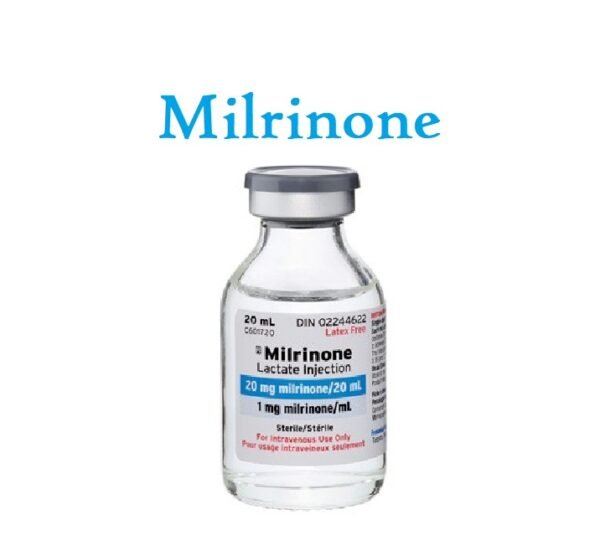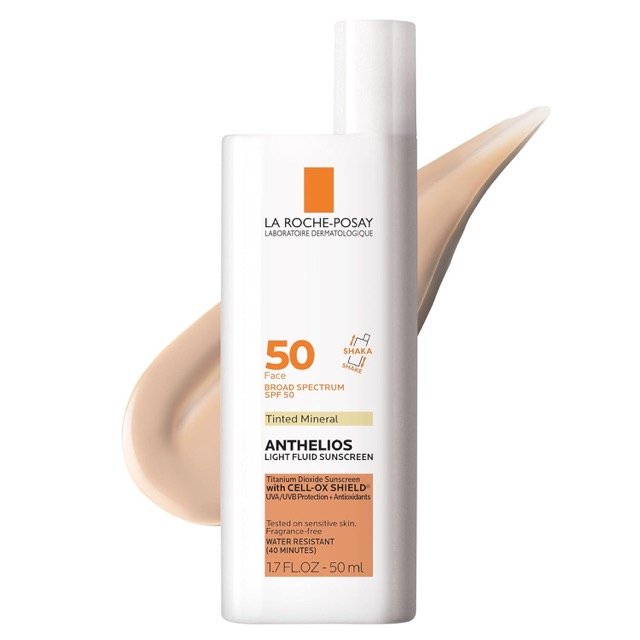The inotropic medication milrinone (Coritrope) has little effect on heart rate. Patients who have recently developed acute decompensated heart failure receive it as a short-term treatment.
Milrinone Uses:
-
Inotropic support in heart failure:
- It is meant to treat acutely decompensated heart failure with short-term intravenous treatment (HF)
- Guideline recommendations:
- Heart failure:
- Bridge therapy may be beneficial for individuals awaiting a heart transplant or mechanical circulatory support when stage DHF is resistant to GMDT and device therapy.
- Long-term care should be provided to a select group of stage D HF patients who are unsuitable for mechanical circulatory support or a heart transplant and who are resistant to drug and device treatment (palliative therapy).
- Hospitalised patients' need short-term care when they have severe systolic dysfunction, low blood pressure, and dramatically reduced cardiac output
- Heart failure:
-
Off Label Use of Milrinone in Adults:
- Bridge to heart transplantation
- Cardiogenic shock
- Symptom relief in advanced heart failure
- Postoperative inotropic support for heart transplant recipients
Milrinone Dose in Adults:
Milrinone (Coritrope) Dose in heart failure (As an inotropic drug):
- Intravenous:
- Loading dose: The 2013 ACCF/AHA heart failure recommendations do not advocate giving 50 mcg/kg over 10 minutes, however, it is possible.
- Maintenance dose: Lower starting dosages of 0.1 mcg/kg/minute for IV infusions have also been suggested, with final maintenance doses of 0.2–0.3 mcg/kg/minute.The 2013 ACCF/AHA heart failure guidelines advise using a maintenance dosage of 0.125 to 0.75 mcg/kg/minute.
- Dosage titration based on response
Note: Infusion at a starting dose of 0.5 mcg/kg/minute causes significant hemodynamic changes to be observed at 30 minutes, similar effects on pulmonary capillary wedge pressure, and cardiac index to be observed at 2 and 3 hours, respectively, when compared to a loading dosage regimen.
Milrinone (Coritrope) Dose in the Bridge to heart transplantation (off-label):
- 0.1 to 0.75 mcg/kg/minute intravenously; adjust the dosage to best meet clinical needs.
Milrinone (Coritrope) Dose in the treatment of Cardiogenic shock (off-label):
- Intravenous: 0.125 - 0.75 mcg/kg/minute
Milrinone (Coritrope) Dosage for Off-Label Postoperative Inotropic Support in Heart Transplant Recipients:
- During the first three to five days, wean as tolerated while administering an IV dosage of 0.375 to 0.75 mcg/kg/minute at the lowest effective dose.
Milrinone Dose in Children:
Dose of milrinone (Coritrope) for hemodynamic support in cases of cardiogenic shock, septic shock, or acute decompensated heart failure There is no established optimal dosage:
Key point: Given that inter-patient variability in clearance may exist, whether or not a patient has low cardiac output syndrome or an acute renal injury, individualized dosage and titration to effect should be employed.
-
Newborns, Children, and Adolescents: IV, Intraosseous:
-
50 mcg/kg of a loading dose can be given during a 10- to 60-minute period.
-
Continuous IV or intraosseous infusion after the loading dose; infusion dosage range: 0.25 to 0.75 mcg/kg/minute; titrate dose as needed
-
Some facilities don't use a loading dosage because of the possibility of hypotension
-
Low cardiac output syndrome (LCOS) prevention after CHD corrective surgery with milrinone (Coritrope) dosage:
-
Infants and Children: IV:
-
Maintenance dose: a 0.25 or 0.75 mcg/kg/minute continuous intravenous infusion.
-
According to a study, high dose milrinone (loading dose: 75 mcg/kg, continuous infusion: 0.75 mcg/kg/minute) has a relative reduction of 64 percent for the development of LCOS, while low dose milrinone group (loading dose: 25 mcg/kg/minute, continuous infusion: 0.25 mg/kg/minute) was statistically insignificant for reducing the development of LCOS.
-
Loading dose: 25 or 75 mcg/kg infused over 60 minutes
-
Pregnancy Risk Factor C
- No negative outcomes have been found in studies on animal reproduction. Studies do, however, indicate higher resorption.
Use during breastfeeding:
- If Milrinone is found in breast milk is unknown.
- It is recommended that it be used with caution by lactating mothers
Milrinone (Coritrope) Dose in Kidney Disease:
-
Manufacturer recommended adjustment:
- CrCl 5 mL/minute/1.73 m : Administer 0.2 mcg/kg/minute
- CrCl 20 mL/minute/ 1.73 m : Administer 0.28 mcg/kg/minute
- CrCl 50 mL/minute/1.73 m : Administer 0.43 mcg/kg/minute
- CrCl 30 mL/minute/1.73 m : Administer 0.33 mcg/kg/minute
- CrCl 10 mL/minute/1.73 m : Administer 0.23 mcg/kg/minute
- CrCl 40 mL/minute/1.73 m : Administer 0.38 mcg/kg/minute
-
Alternative Dosage Modifications for Patients with Renal Impairment
| CrCl (mL/min) | Starting dose (mcg/kg/minute) | ||
| 0.375 | 0.5 | 0.75 | |
| 50 | 0.25 | 0.375 | 0.5 |
| 40 | 0.125 | 0.25 | 0.375 |
| 30 | 0.0625 | 0.125 | 0.25 |
| 20 | Consider alternative therapy | 0.0625 | 0.125 |
| 10 | Consider alternative therapy | 0.0625 | |
| 5 | Consider alternative therapy | ||
| Based on expert opinion | |||
Dose in Liver disease:
The manufacturer has not provided any dose adjustment.
Side Effects of Milrinone (Coritrope):
-
Cardiovascular:
- Hypotension
- Ventricular arrhythmia
- Supraventricular cardiac arrhythmia
- Chest pain
- Angina pectoris
-
Central nervous system:
- Headache
Contraindications to Milrinone (Coritrope):
- Hypersensitivity to any component of the formula
Warnings and precautions
-
Arrhythmias:
- There are two types of arrhythmia: supraventricular tachycardia (with milrinone) and Ventricular Tachycardia (with milrinone).
- Pay attention; sudden cardiac death has been observed.
- An extended half-life may be experienced by patients with compromised renal function. Even after discontinuing milrinone, arrhythmias can still happen.
- Before you start the therapy or dosing escalation, ensure that the patient is free from atrial fibrillation.
- Install appropriate safeguards to guard heart transplant patients against sudden cardiac death.
-
Hypotension
- Milrinone can cause hypotension. Monitor your BP often
- Temporary dose reductions or discontinuations may be necessary
-
Cardiovascular disease
- If the patient is suffering from severe obstructive or pulmonic valve disease, do not use. Instead, seek surgical relief.
- Milrinone could increase the obstruction of the outflow tract in hypertrophic cardiomyopathy
-
Electrolyte imbalance:
- Arrhythmias can be caused by electrolyte imbalances, especially hypokalaemia and hypomagnesemia. If you notice an imbalance, correct it before using
-
Renal impairment
- Reduce the infusion rate if you have renal impairment.
- Milrinone's half-life prolongs with renal impairment. Longer hypotension could occur.
Milrinone: Drug Interaction
|
Risk Factor C (Monitor therapy) |
|
|
Riociguat |
Riociguat's hypotensive action may be strengthened by milrinone. Treatment: Riociguat should not be used in combination with PDE type 5 and nonselective PDE inhibitors. Other PDE inhibitors are not prohibited, but patients should exercise caution and have their blood pressure checked often. |
|
Risk Factor X (Avoid combination) |
|
|
Anagrelide |
Might make Milrinone's harmful or hazardous effects worse. |
Monitoring parameters:
- Platelet count
- Heart rate
- Infusion site
- Fluid status
- Renal function
- ECG
- Electrolytes (especially potassium and magnesium)
- Blood pressure
Monitor the following values if a pulmonary artery catheter is in place.
- Pulmonary capillary wedge pressure
- Systemic vascular resistance
- Cardiac index
- Pulmonary vascular resistance.
- Stroke volume
Consult the regulations and approaches of each specific institution.
How to administer Milrinone (Coritrope)?
Intravenous (only):
- Undiluted loading dosage (optional) should be administered gradually over a 10-minute period; seeing the injection rate may be made easier by dilution to a total volume that is rounded to 10 or 20 mL.
- Utilize a continuous infusion pump to administer the maintenance dosage.
Mechanism of action of Milrinone (Coritrope):
- A selective phosphodiesterase inhibitor called milrinone causes vasodilation by acting on the heart and vascular tissue.
- It also produces little chronotropic activity.
Metabolism:
- Hepatic (minor); majority remains metabolized
The onset of action:
- IV: 5 - 15 minutes
Excretion:
- Urine (83 percent as unchanged drug; 12 percent as 0-glucuronide metabolite)
- A significant method of milrinone removal is active tubular secretion.
Protein binding,
- plasma: ~70%
Half-life elimination:
- Infants (after cardiac surgery): 3.15 ± 2 hours
- Children (after cardiac surgery): 1.86 ± 2 hours
- Adults:
- Heart failure: 2.3–2.4 hours; individuals with renal dysfunction have a longer half-life.
- Continuous venovenous hemofiltration (CVVH) for severe heart failure: 20.1 3.3 hours
International Brand Names of Milrinone:
- Coritrope
- Corotrop
- Corotrope
- Inovad
- Lunan Likang
- Milicor
- Milron
- Nefrisol
- Primacor
- Unacor
Milrinone Brand Names in Pakistan:
Milrinone Lactate Injection 10 mg in Pakistan |
|
| Milron | Atco Laboratories Limited |







